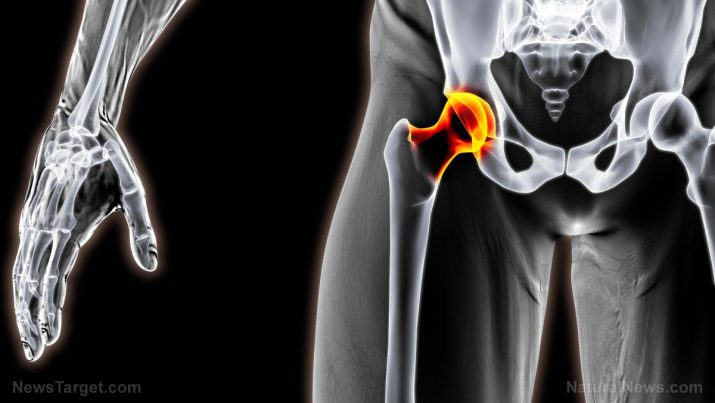
Rickets – causes, side effects and treatments at NaturalPedia.com
Tuesday, June 19, 2018 by Michelle Simmons
http://www.naturalpedia.com/rickets-causes-side-effects-and-treatments-at-naturalpedia-com.html

Rickets is a childhood bone disorder in which the bones soften and become prone to fractures and deformity. It is a condition usually linked to malnutrition. It is mainly caused by the lack of vitamin D, which means that low exposure to sunlight can also play a role in its development. In addition, inadequate levels of calcium may contribute to the condition. Rickets primarily occurs in children, but may also develop in adults in a condition known as osteomalacia. In most cases, the affected child has experienced severe and chronic malnutrition, usually since early childhood. It may be rare in industrialized nations, but it is fairly common in some developing countries.

Known side effects of rickets
The known side effects of rickets include the following.
- Pain or tenderness in the bones of the arms, legs, pelvis, or spine
- Stunted growth and short stature
- Bone fractures
- Muscle cramps
- Teeth deformities, such as delayed tooth formation, holes in the enamel, abscesses, defects in the structure of the tooth, and an increased number of cavities
- Skeletal deformities, such as an oddly shaped skull, bowlegs or legs that bow out, bumps in the rib cage, a protruding breastbone, a curved spine, and pelvic deformities
Rickets may also lead to complications, such as chronic skeletal pain, skeletal deformities, and skeletal fractures that occur without cause.
Body systems harmed by rickets
The body system harmed by rickets is the musculoskeletal system.
List of foods or nutrients that prevent rickets
The foods that prevent rickets include those rich in vitamin D, such as cod liver oil, salmon, mackerel, tuna, eggs, and yogurt; foods rich in calcium, such as dairy products like milk and cheese, and leafy green vegetables like kale and spinach; and foods rich in phosphorus, such as dairy products, salmon, whole-wheat bread, halibut, beef, chicken, and turkey.
Treatments, management plans for rickets
Treatments for rickets aim to relieve its side effects and correct the cause of the condition. The cause must be treated to prevent the disease from returning. Because most cases of rickets are caused by a vitamin D and calcium deficiency, it is usually treated by increasing a child’s intake of vitamin D and calcium. Vitamin D and calcium levels can be raised by eating more foods that are rich in calcium and vitamin D and taking daily calcium and vitamin D supplements. Adequate exposure to sunlight also helps the body to make vitamin D, so increasing the amount of time spent outside will be helpful. Positioning or bracing may also be used to lessen or prevent deformities, while some skeletal deformities may require surgery to correct them.
Where to learn more
- Rickets is back as a new “affluence disease”
- Sunscreen causes rickets – new wave of cases in England
- Explosion in rickets, gout and scarlet fever caused by processed junk food and inflationary monetary policy
- More cases of rickets turn up in UK, lack of sunshine exposure to blame
- Huge increase in rickets among ethnic groups due to vitamin D deficiency
Summary
Rickets is a childhood bone disorder in which the bones become weak and deformed.
Rickets causes pain or tenderness in the bones of the arms, legs, pelvis, or spine; stunting; bone fractures; muscle cramps; teeth deformities; and skeletal deformities.
Rickets can also cause chronic skeletal pain, skeletal deformities, and skeletal fractures that occur without cause.
Foods that prevent rickets include cod liver oil, salmon, mackerel, tuna, eggs, yogurt, milk, yogurt, cheese, and leafy green vegetables, whole-wheat bread, halibut, beef, chicken, and turkey.
Treatments for rickets include increasing vitamin D and calcium levels with diet and supplements, adequate sunlight exposure, positioning or bracing, and surgery.
Sources include:
Tagged Under: Tags: rickets





